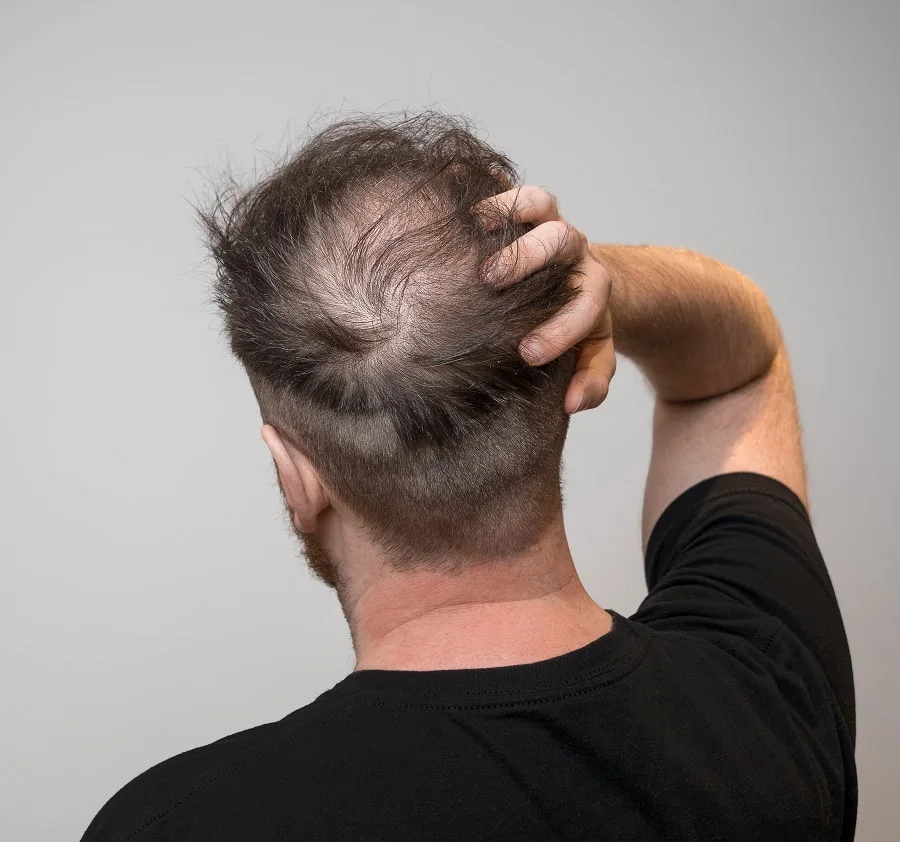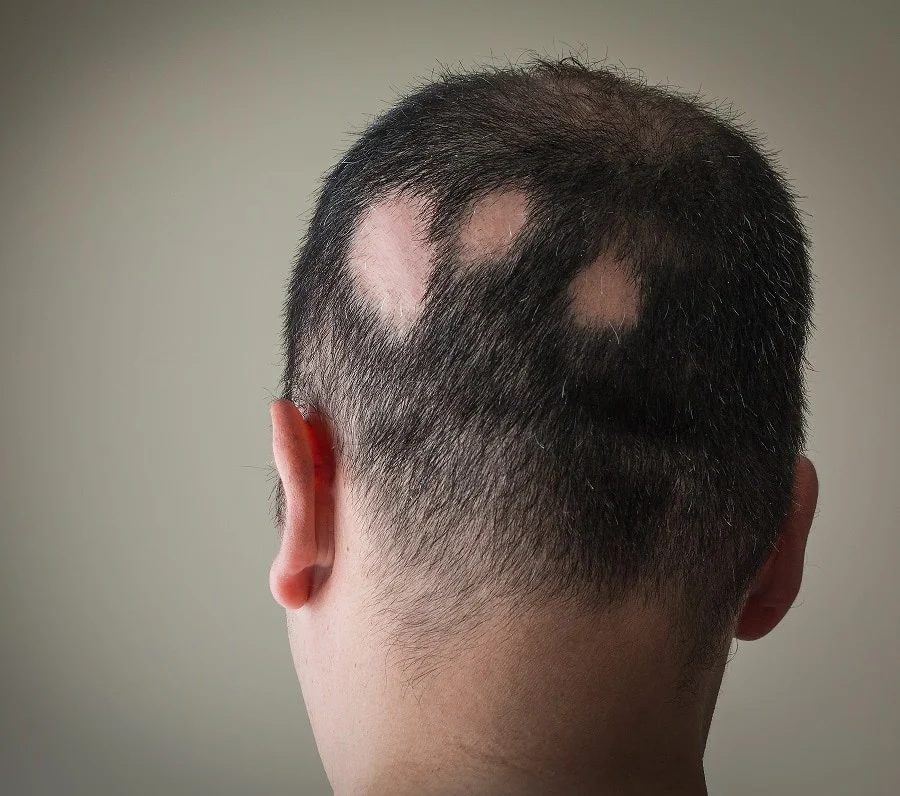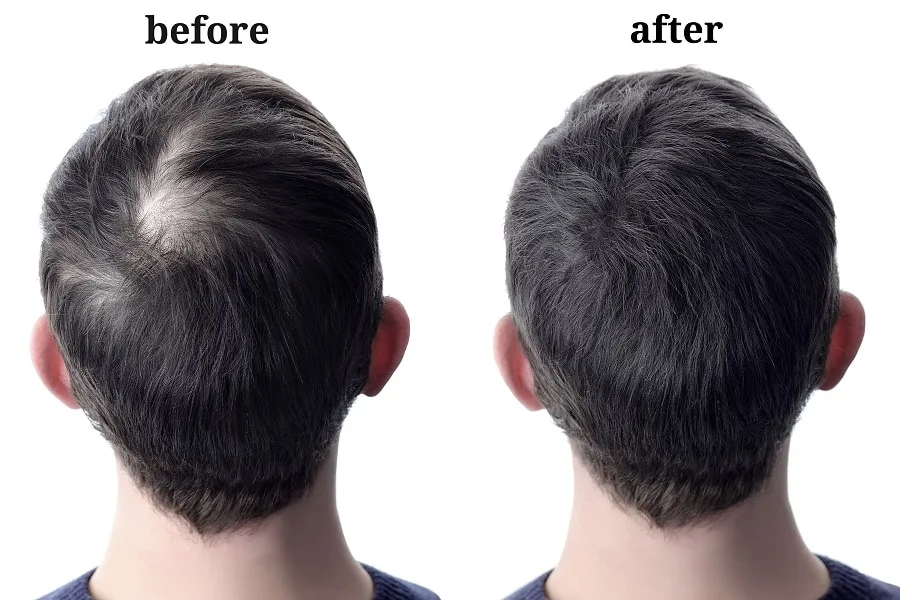Being conscious of the early signs of going bald can help you determine how to deal with the condition. While we all lose about 50-100 hair strands daily, balding can result in rapid hair loss. But how to tell if you are going bald as the amount of hair we lose during balding varies from person to person?
This article looks into various tell-tale signs you’re going to be bald, causes of balding, how to reverse balding, and more. Let’s get started.
What Causes Balding in Men?

The leading cause of balding in men is androgenetic alopecia, or what’s commonly called male pattern baldness. It is a hereditary condition that accounts for over 95% of men’s hair loss.
Although the male sex hormone, dihydrotestosterone (DHT), is responsible for hair growth in the body, it’s the primary cause of androgenetic alopecia. When DHT attacks hair follicles on your scalp, it causes them to grow thinner and shorter. Eventually, your hair begins to fall out, and the hair follicles stop producing hair.
If you’re experiencing male pattern baldness, the condition might follow a given pattern. You may have one of these two patterns:
- M-shaped hairline recession
- Thinning on top of your head
Besides androgenetic alopecia, baldness in men can result from genetics, hormonal changes, alopecia areata, telogen effluvium, nutritional deficiency, thyroid issues, and rapid weight loss.
How Long Does It Take to Go Bald?
It usually takes 15 to 25 years to go completely bald. However, balding in some men can be quicker, taking less than five years.
When you start to experience signs of going bald, your scalp hair may thin at the sides and the top. You’re likely to develop a bald spot in the middle of the scalp resulting from thinning hair. With time, the bald patch and the thinning hair on the sides grow larger and join together.
This process eventually leaves a patch at the front and a rim of hair around the sides and back. If you’re like some men, the rim of hair remaining on the sides and back may also thin and leave a bald head.
While balding usually comes with old age, some people notice signs of it in their early and late 20s. Some men start to go bald in their 30s and 40s, while over half experience complete balding in their 50s and beyond.
7 Signs You Are Going Bald
If you’re worried about hair loss, here’s how to know if you’re going bald.
#1. Receding Hairline

A receding hairline is among the most common signs of going bald. When this condition begins, the hair at your temples thins and moves backward, away from your face. As the hair at the temples thins, you will notice an M-shaped hairline on the scalp.
With time, the hairline at the front moves lower towards the center of your scalp. In some cases, the hairline may begin to recede across your scalp.
#2. Hair Thinning

Your hair may start to thin at the back of your head, temples, or crown. Most men over 50 experience hair thinning due to weak hair follicles. When thinning occurs at the crown or back of your head, you may not notice it.
Hair thinning progresses gradually and may take several years before you experience baldness. This condition causes the skin around the affected area to become more visible.
#3. Shorter Hair Growth Cycle
Another common sign of going bald is that your hair growth cycle may become shorter. When this condition begins, your hair grows slower and sheds in a shorter time frame.
The leading cause of a shorter hair growth cycle is the shrinking hair follicles. When hair follicles shrink, they produce thin strands that grow slowly and fall out faster.
#4. Bald Spots

Baldness may come in the form of bald spots or patchy areas on your scalp. The cause of this form of hair loss results from a condition called alopecia. In most cases, these spots may appear in round or oval-shaped patches.
Since alopecia is an autoimmune disorder, it may affect other body parts, such as the face, eyelashes, and eyebrows. Depending on the type of hair loss, these bald spots can be temporary or permanent.
#5. Itching Scalp
An itchy scalp doesn’t necessarily mean you’re going to be bald. However, it can signify that you’re suffering from a condition that may lead to hair loss. Some of these conditions include seborrheic dermatitis, psoriasis, or folliculitis.
These conditions may tempt you to frequently scratch your scalp, causing damage to hair follicles and hair fallout. If you have an itching scalp, visit your dermatologist for diagnosis and treatment.
#6. Hair Falling Excessively

Discovering a few hairs on your pillow, in your hairbrush, or shower drain is normal. That doesn’t mean you’re starting to go bald. But will you go bald if your hair begins to fall excessively?
The truth is that hair that falls out in large clumps may signify baldness. Be sure to see your healthcare professional to determine the cause of such hair loss.
#7. Hair Loss All Over Your Body
Certain conditions such as alopecia universalis, adrenal gland disorder, polycystic ovary syndrome (PCOS), and iron deficiency can lead to hair loss across the entire body. Similarly, treatments such as chemotherapy can lead to body hair loss.
The good news is that your hair usually grows back after a given period depending on the condition. Seek the help of your healthcare professional once you experience hair loss all over your body.
Do Guys with Thick Hair Go Bald?

Whether you have thin or thick hair, you’ll eventually go bald when the process begins. While it’s true that guys with thick hair enjoy fuller and firmer hair, they still face the risk of hair loss.
They’re also likely to notice various early signs of balding because they tend to lose more hair. See your specialist doctor if you have thick hair and notice abnormal thinning.
Can You Reverse Balding Hair?
You can reverse balding hair or slow it, but it’s not always guaranteed. If you want to reverse balding hair, don’t wait until complete balding has occurred.
Take action as soon as you notice signs of balding for the best results. In some conditions, such as alopecia areata (bald spots), your hair may regrow within a year without any treatment.
How to Reverse Balding Hair in Men

You can reverse balding hair through various treatments such as medications or surgery. Alternatively, your doctor may recommend a healthy diet to help reverse balding hair.
If your balding hair results from an underlying disease, your doctor may use one of the following medications:
- Minoxidil (Rogaine)
- Spironolactone (Corospir, Aldactone)
- Finasteride (Propecia)
- PRP therapy
- Platelet-rich plasma
- Topical retinoids
Men suffering from permanent hair loss may opt for hair transplant surgery. Your dermatologist or a cosmetic surgeon may remove hair from different parts of the head and transplant it to the bald spot. Sometimes, the surgeon may take a strip of skin with multiple hair groupings and transplant it to the balding area.
Other methods you may use to reverse balding hair include the following:
- Getting sufficient vitamins and minerals
- Using hair thickening shampoo
- Reducing stress
When to See a Doctor for Balding Signs?
You should see a doctor if signs of balding come with the following symptoms:
- Swelling around the balding area
- Pus discharge
- Excessive itchiness around the balding area
- Dramatic hair loss on other body parts
- Sudden weight loss or weight gain
- High fever
- Hair growing excessively on other body parts
- Redness around the balding area
When balding begins, you may notice a receding hairline, thinning hair, bald spots, or hair falling excessively.
The best way to prevent balding is to take action immediately after you spot these signs of going bald. You can visit your doctor to recommend the best way to reverse or slow baldness.
